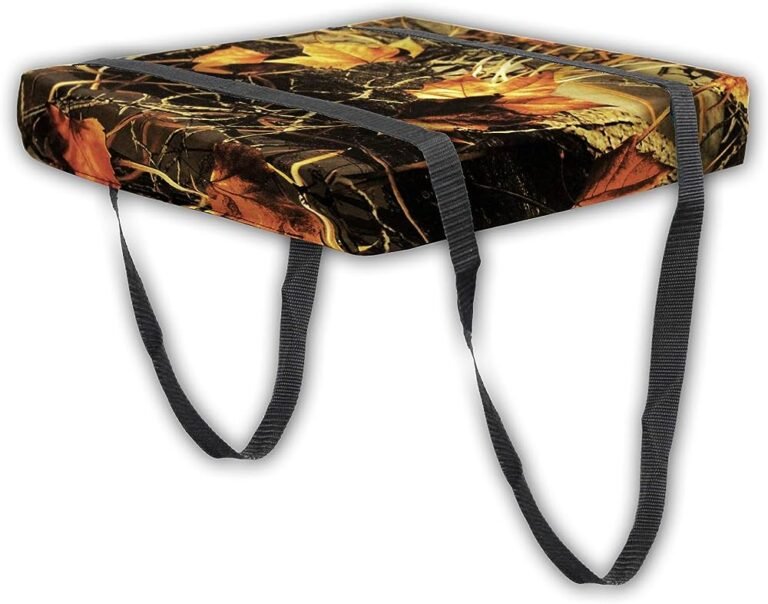What Should You Do If A PFD Has A Tear In The Outer Fabric?

Spending time on the water has always been a way to wind down, relax, spend time with family, enjoy nature, and exercise.
In recent years, the popularity of water sports has considerably increased, leading to an ever-increasing number of people on the water trying out one sport or the other.
Naturally, the safety of people is a concern, and the most enforced safety gear for water sports is the Personal Flotation Device (PFD), a device that keeps you afloat even when you no longer have the energy to do so.
With use, however, this safety gear eventually deteriorates. What you do at this stage is critical as using a functional PFD is essential to your survival on the water, especially if you like engaging in exhilarating activities.
In this article, we look at what you should do if your PFD has a tear in its outer fabric. Read on and stay safe on the water.
What is a PFD?
A PFD, or personal flotation device, is a device that is worn by a person to provide them with buoyancy and keep them afloat in water, particularly when they end up in the water unexpectedly, as in the event of a mishap or capsizing of their vessel.
There are many different types of PFDs, and they are typically made out of materials such as foam or other buoyant materials. PFDs are required by law in many countries for certain activities, such as boating.
What should you do if a PFD has a tear in the outer fabric?
For your life jacket to keep you safe in an emergency, it has to be in top-notch condition. That implies that anything that compromises the functionality of your PFD should be sorted out as soon as it is noticed.
The ideal course of action, when there is an issue with your PFD, is to get a new one, but you may not be able to afford a new life jacket at that very moment.
Fret not, you need not give up on your sport because of an issue with your PFD. Discussed below are things you can do to make your PFD usable until you get a new one.
Patch the PFD
You read that right. The best course of action when your PFD has a tear in the outer fabric and you are not ready to replace it is to patch it.
Patching the PFD not only saves you time but also helps reduce possible costs on the life jacket as well. If done properly, you could use the PFD for quite some time before having to change it.
Things to consider when patching your PFD.
- The tear on the life jacket must be on the outer fabric. This means that the tear must not go through the material of the life jacket or be deep-rooted in it. If the tear is beyond the outer fabric, you have to replace the life jacket.
- Make sure the patching of the life jacket is handled by an expert. This point cannot be overemphasized. Do not try to patch the PFD yourself, except if you are using it to practice patching a PFD.
- The PFD should be patched such that it hides the tear in the PFD without affecting the functionality of the life jacket.
If you hand the PFD over to a professional and he does a good job, you should have a usable PFD at hand at least until you can replace it. On the flip side, if the life jacket is ill-repaired, it will make the PFD prone to more tears and ultimately unfit for use.
Tape the PFD
Another way to manage a life jacket that has a tear in it is to tape it. The tape is usually duct tape, but it could be any reliable tape available.
As you tape the PFD, make sure you exercise caution so that the PFD’s latter state won’t be worse than the current one.
This method is the least reliable as it is easy to make a mistake in the repair, but if done well, it can buy you some time till you replace the PFD.
Replace the PFD
The best possible solution once you notice a tear in your PFD is to replace it. While the cost might stretch your budget, consider your priorities and you will conclude that your safety is of utmost importance.
A repaired PFD might let you down when you need it most, and the result of that is a severe injury and possibly death, so getting a new PFD is the best way to be safe while enjoying yourself on the water.
Ultimately, patching the PFD or taping it are smart ways to delay the inevitable, but you must eventually get a new life jacket as soon as possible to ensure your safety.
How to Inspect your PFD
Part of the maintenance of your PFD is ensuring it is fit for use on the water. Below are some tips to help you check the structural integrity of your life jacket and what to do should it be compromised.
Check the hardware
While inspecting your PFD, you should pay attention to the hardware (zippers, straps, buckles, etc.) and inspect them for damage.
If there is any issue with any one of them, it is time to replace your PFD. The reason why a repair is not advised is that damaged hardware almost always means damage to the material of your life jacket, and that is never good news.
While at it, you should also make sure that the straps on your PFD can withstand the pressure by pulling hard on them. Be careful not to damage them.
Inspect the webbing
The webbing must be in good condition for your PFD to be functional. If the webbing is torn, ripped, or missing, it is time to get a new life jacket.
Large tears or rips
When inspecting your PFD, you should always have an eye out for tears and rips. If the damage is manageable, you can get away with repairing the PFD, but if not, you have to replace it.
Rotten material
Believe it or not, with time, the material of your PFD may start to rot. You may notice this as a weakness in the material of your life jacket. When that happens, your PFD has served its time and is ready to be replaced.
Oil spills
Oil spills negatively affect the buoyancy of your life jacket, so their presence on your PFD is never a good sign.
For your safety, it is best to replace your life jacket immediately after you notice oil spills. You don’t want to take the risk of the PFD giving out on you in an emergency, it could cost your life.
How to store your PFD
It is important to note that many a time, the tear you see in your personal flotation device is a result of poor storage practices.
PFDs are designed for use in water and so rarely get damaged while in use. It is up to you to store yours properly to ensure it lasts for years to come. Some tips to help with that are given below.
Never store your PFD in direct sunlight
Sunlight and the material of your flotation device are not friends. The ultraviolet rays of the sun cause the fabric of your life jacket to fade and deteriorate over time, so never store your PFD at the mercy of the sun.
Your PFD is exposed to the sun when you are out on the water, there is no need for it to endure sunlight when it is not in use.
Store the PFD in a cool, dry area
As places with sunlight can’t be used to store your life jacket, you may wonder about where to store your PFD. By now, you have your answer. Life jackets should be stored in a cool dry area away from the sun and moisture to stand the test of time.
Store the PFD in a ventilated area
Making use of a cool, dry place to store your PFD is not good enough. The storage area should be well-ventilated if you don’t want mold and mildew growing on your life jacket. PFDs are used on the water and as such may be wet when taken into storage.
A well-ventilated storage area ensures this water eventually dries up without causing adverse effects (like the rotting of material) to your life jacket. Ensure your PFD is always stored in ventilated areas, and it will last a long time.
Hang the life jacket when it is not in use
When it is time for storage, you may be tempted to fold your PFD and drop it on a shelf. If you are in that category, know today that the best way to store your PFD is to hang it.
Folding your PFD makes it possible for water to remain in some parts of the life jacket and that could lead to the growth of mold and mildew, which would be counterproductive to your efforts to preserve the PFD.
Hanging your PFD on the other hand makes it easy for it to get dry while preventing the material from rotting or becoming the home of some creature in your house.
Clean the PFD
If you want your life jacket to last, it should be clean before you store it. If you have been in salt water, mud, sand, or grime, it is in your best interest and that of your life jacket to rinse and dry it before storage. Failure to do so would be sentencing your PFD to a short life span.
Having a personal flotation device (PFD) is indispensable to being safe on the water. It is, therefore, no surprise that it is mandatory safety gear for all who desire to spend time on the water.
For a life jacket to keep you afloat, however, it has to be in good condition, and tears in the fabric of your PFD are more dangerous than they seem. Maintenance is key to protecting your life jacket’s structural integrity, particularly when it’s time for storage.
You should also inspect your PFD regularly to make sure it is in good condition. Finally, make sure you replace the PFD if it is no longer safe for use. Be safe and have fun on the water.






